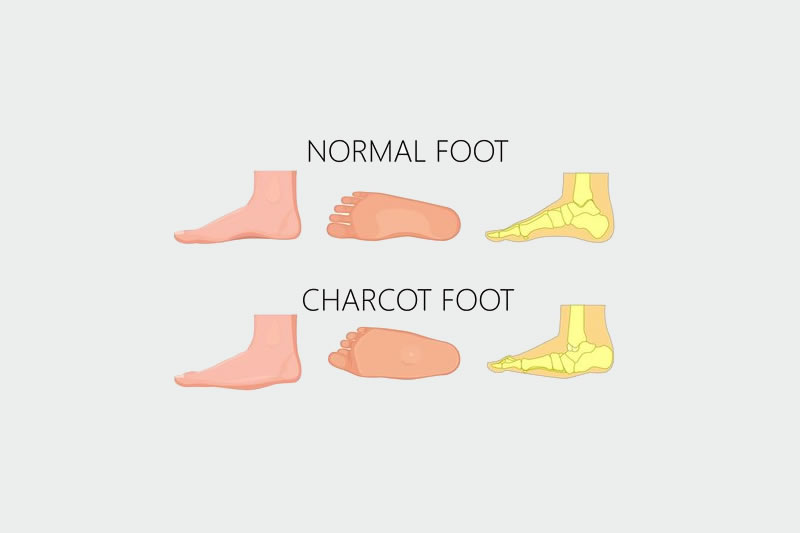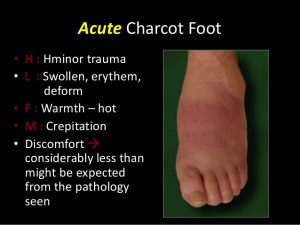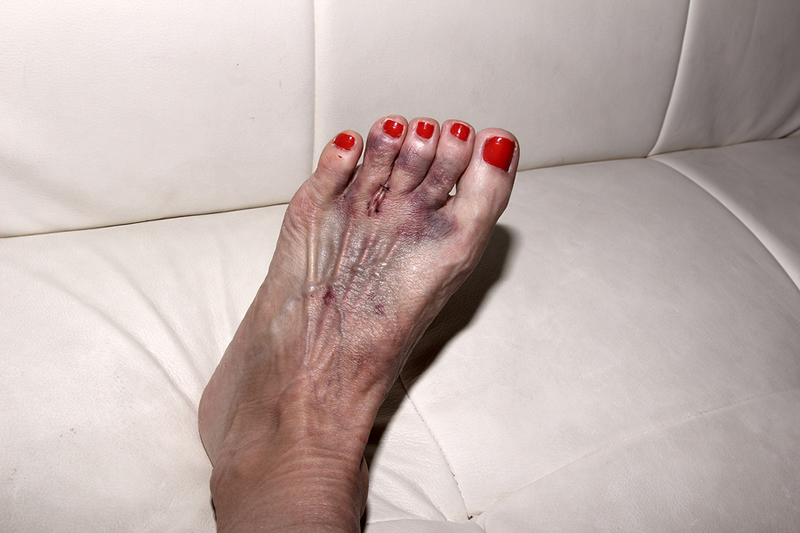
What is Charcot foot?
The term “Charcot foot” describes a pattern of bone and joint damage that results in weaknesses in the structure of the foot. If left untreated, it can lead to foot deformity.
Acute Charcot foot many times is undetected because there are no visible signs; however, changes to the bones of your feet occur as a result of a change in your nerves and blood vessels. When the bones change, even minor trauma can result in small fractures.
Chronic Charcot foot results when those micro-fractures occur over and over without being stabilized. It can lead to deformities in which shoes may not fit and can result in pressure points that may lead to ulcers and infection if not treated.
Causes
There is much debate on the actual cause of a Charcot foot. Charcot foot usually begins with peripheral neuropathy, or nerve damage in the feet. Because the nerves do not function well, you may not sense pain when you injure your foot or your foot muscles may not function to support the foot properly. You may break bones or damage joints without knowing it. If you keep walking on your injured foot, fractures can heal unevenly. This causes foot deformity.
Symptoms
Burning, tingling, numbness, redness or swelling. It is many times mistaken as gout or cellulitis.

When to Visit a Podiatrist
Everyone with symptoms of nerve damage in the feet should see a podiatrist. Podiatrists are doctors who are specially trained to treat the feet and ankles.
Diagnosis and Treatment
Your doctor will examine your feet and take images. Infection must be ruled out. The Charcot foot is treated by eliminating any weight on the foot. This option sometimes means strict bed rest. Other ways to remove pressure include casting, crutches or walkers, and special braces and/or footwear.
If the feet are severely deformed, a podiatrist may perform a surgical correction. Because patients with severe Charcot foot usually have an underlying disease that puts them at risk for further complications, surgery is not always optimal, but in cases where the deformity has resulted in pressure points or an ulcer, surgery is recommended.
Prevention
By catching Charcot early and staying off your feet to ensure proper healing, you may be able to halt Charcot’s progress. Most patients can return to a reasonably active life after the initial treatment for a Charcot foot. However, lifelong attention to the foot is needed to prevent further complications.



